 Bomber Command
Bomber Command  |
Aircrew Chronicles
|
Aircrew Losses
|
Nose Art
|
BCATP
|
Lancaster
|
Media
|
Aircrew Chronicles
|
Aircrew Losses
|
Nose Art
|
BCATP
|
Lancaster
|
Media
 Bomber Command
Bomber Command  |
Aircrew Chronicles
|
Aircrew Losses
|
Nose Art
|
BCATP
|
Lancaster
|
Media
|
Aircrew Chronicles
|
Aircrew Losses
|
Nose Art
|
BCATP
|
Lancaster
|
Media
Bomber Command
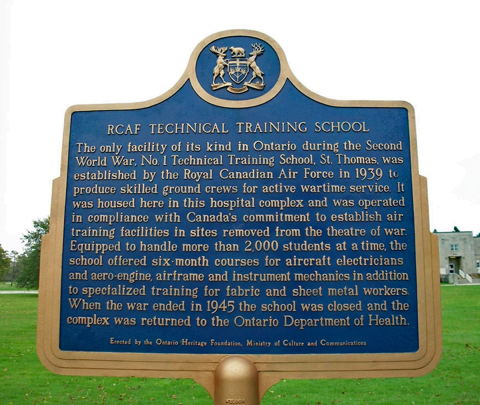
|
Ground crew were the men and women who provided the necessary support to keep Bomber Command flying. The operational success of a squadron and the safety of the aircrew rested on the shoulders of the ground crew. Each aircraft had a dedicated maintenance team of skilled and highly trained tradesmen who serviced and repaired their assigned aircraft. Ground crew underwent a lengthy and rigorous training program, the primary Canadian school being at St. Thomas, Ontario. Some of the training, especially when dealing with electronics, was top secret. As Bomber Command grew, so did the demand for trained ground crew personnel. Working conditions were challenging. Ground crew worked in all types of weather, generally at exposed aircraft dispersal points that were located around the perimeter of the airfield. Some erected crude, temporary shelters at their aircraft's dispersal. Occasionally, work was done in draughty hangars. It was not uncommon to work through the night under black-out conditions. |
Their work was not without danger. Accidents during bomb and fuel loading or while assisting at aircraft crashes often had fatal consequences and enemy intruder aircraft attacked Bomber Command airfields. 530 ground crew lost their lives during the war.
Ground crew consisted of armourers (bombs), armourers (guns), aero-engine mechanics, airframe mechanics, instrument mechanics, fabric workers, electricians, wireless operators, metal workers, and welders.
|
and was a member of the Bomber Command Museum. His tour of operations included eleven trips to Berlin. In his highly regarded book, "Boys, Bombs, and Brussels Sprouts," he wrote: "You had to understand groundcrew, as so many senior officers failed to do. They would literally do anything for you, accept any task, if they knew and understood why it was important, and if they knew you understood their problems. Each of the squadron's twenty bombers was serviced by its own groundcrew. Each crew was headed by a sergeant, although often a corporal was given the responsibility. A flight sergeant or 'chiefy' was in charge of each flight of ten bombers. Each small group of fitters and riggers, supported by instrument bashers, radio techs, armourers, and gas crews, owned the bomber. While the aircrew might think the bomber belonged to them, and painted witty sayings, pictures, and bombs on the nose of the bomber, the groundcrew knew differently. It was their aircraft and they had a fierce pride of ownership. They wanted their bomber to work to perfection, and this was apparent to any interested aircrew. . . If, as aircrew, you understood that the bomber belonged to them, and that you only borrowed it for flying purposes, the trust between the ground and air sides developed beautifully. "It was the groundcrew who wept for the missing aircrew as they waited through the long, cold nights for their bomber to return. For the groundcrew it was a sad time when most of the bombers had returned and their dispersal stood empty. . . Some groundcrew lost ten or more bombers and each had its effect on their behaviour. A pilot gets to love a particular aircraft, for, like a car, it has its own idiosyncrasies; but a ground technician gets to revere it and to give it human qualities. |
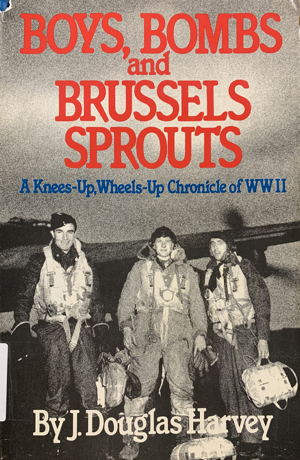
|
"They worked in rubber boots, turtleneck sweaters, and sleeveless leather jerkins. They would get cold and wet, clambering up the metal scaffolding, changing props or guns or aerials. The two hangars on the base were only used for major overhauls, all other work was done in the open, day or night, rain or shine. Groundcrew were masters of improvisation, designing and making special tools that could make the work go faster. Perhaps the most surprising thing about them was their cheerfulness."
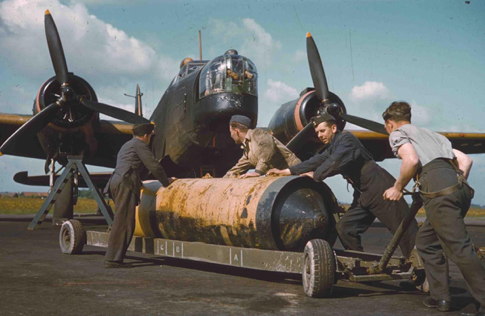
|
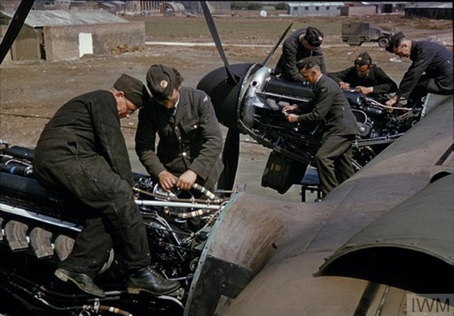
|
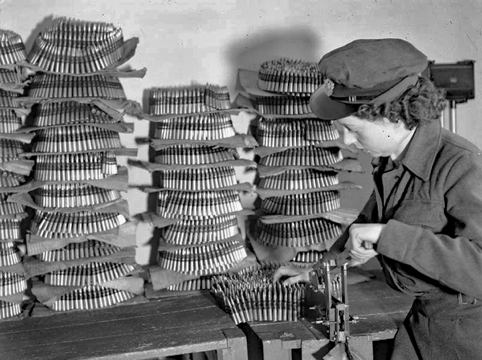
|
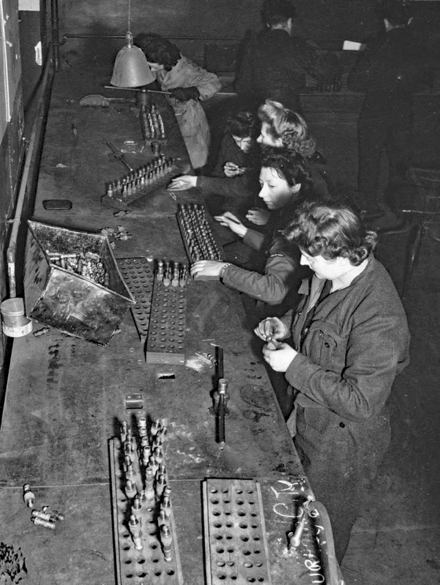
|
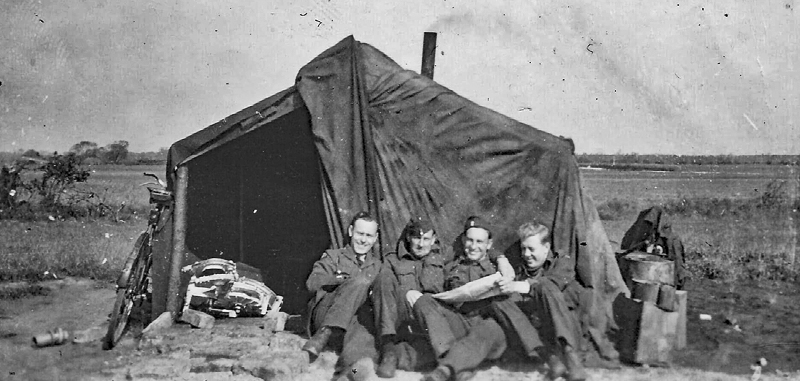
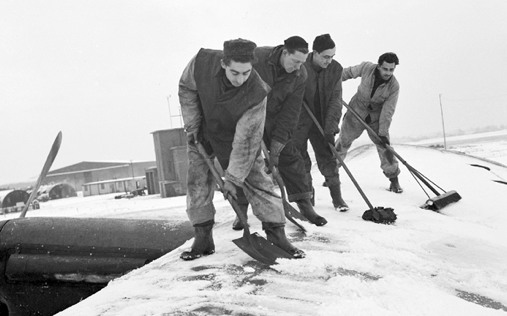
|
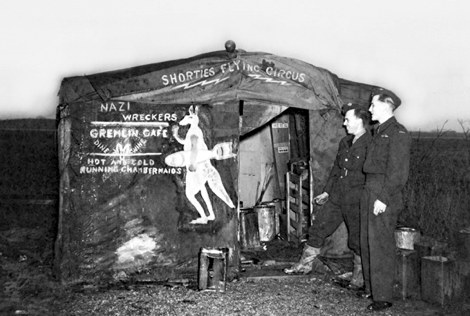
|
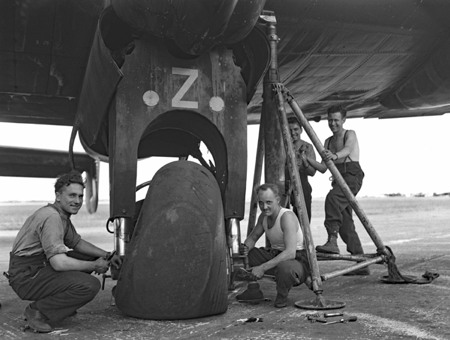
|
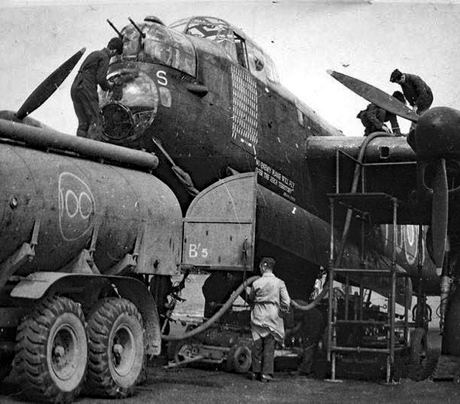
|
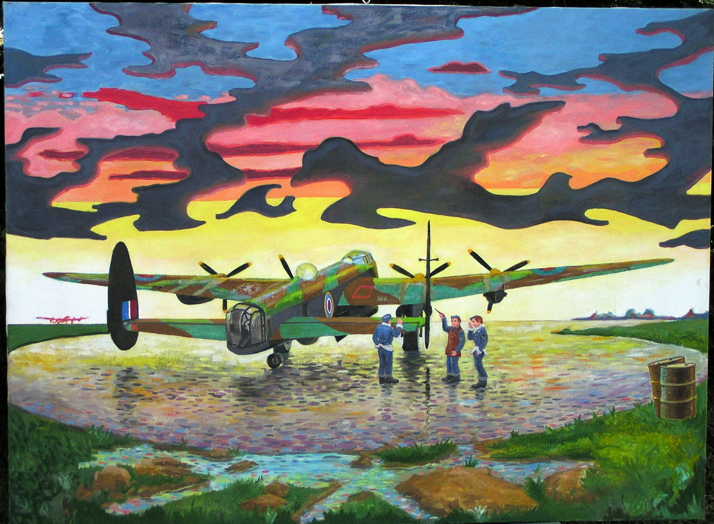
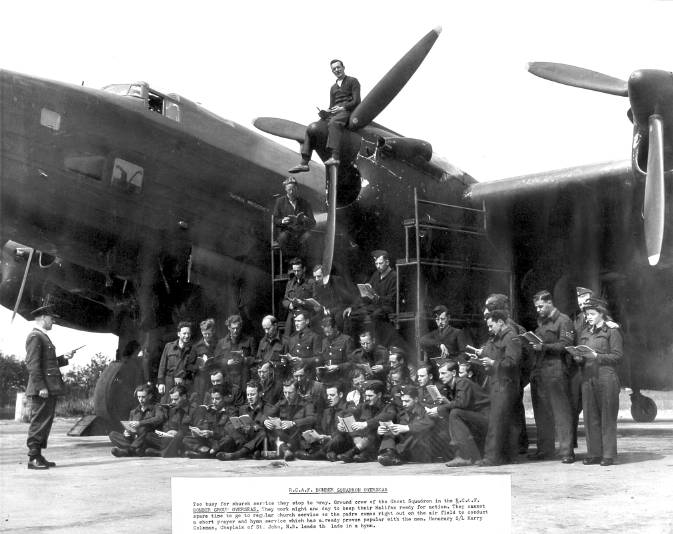
During the war, the Canadian government sold "Victory Bonds" to raise money for the war effort and photographs such as these were used to encourage their purchase. Del's older brother, Bain Todd, was stationed in Newfoundland during the war. One day he was walking past a photographer's shop when he noticed a window display advertising the sale of Victory Bonds. The above photo was featured in the display. Bain was astonished when he recognized his brother, LAC Todd, sitting in the front row of the ground crew assembled in front of the Halifax. He spoke to the photographer in the shop who offered to give Bain the photo once the ad campaign was complete. Bain carefully wrapped the photo and mailed it back to their mother in Calgary. When Del finally returned from England, Bain gave his brother the photo. It hung in the Todd's living room in Nanton until Del donated it to the museum. Del Todd is sitting in the front row center (fourth from the right).
The caption that is still in place below the photo in the museum reads as follows:
|
Too busy for church service, they stop to pray. Ground crew of the Ghost Squadron in the R.C.A.F. BOMBER GROUP OVERSEAS, they work night and day to keep their Halifax ready for action. They cannot spare time to go to regular church service so the padre comes right out on the airfield to conduct a short prayer and hymn service. This has already proven popular with the men. Honourary S/L Harry Coleman, chaplain, of St. John, New Brunswick leads the lads in a hymn. |